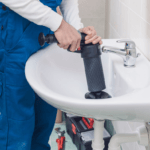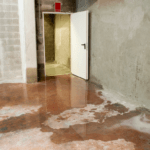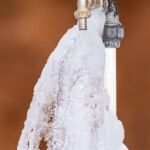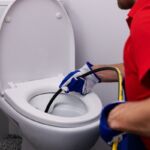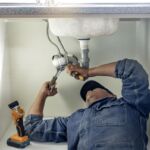
Sump pumps are a valuable tool for protecting your home from flooding caused by heavy rains or plumbing issues. They come in various types, each with features, benefits, and installation requirements. Proper maintenance is also essential to ensure that your sump pump works correctly and protects your home from water damage.
In this article, we will discuss the different types of sump pumps available, their features and benefits, how to install them correctly, and how to maintain them properly so they can continue working effectively. We will also cover signs of potential failure, so you know when to call a professional for help.
When considering which pump to install in your home, there are three main types: pedestal, submersible, and Backup Pumps. Pedestal sump pumps are designed to be installed above the basement floor or crawlspace where they remain visible and out of the way. They usually have a middle outlet for draining and a float switch that will activate when the water level rises too high.
Submersible sump pumps are designed to be placed inside a specially made basin, with the pump set up underneath the water line, so it is fully submerged. They are quieter than pedestal sump pumps and also require less maintenance.
No matter which type of sump pump you choose, each has its features and benefits that should be considered. Pedestal pumps are typically more affordable and more
accessible to install than submersible pumps. On the other hand, submersible pumps tend to have a longer lifespan due to their construction and design. Additionally, they can be used in confined spaces where pedestal pumps cannot fit.
When installing either type of sump pump, following the manufacturer’s instructions closely is crucial for the best results. It is also important to check local building codes before installation, as some may require additional steps or safety measures. Finally, regularly checking the pump’s power supply and connections is essential to ensure they function correctly.
To keep your sump pump working in top condition, a few simple maintenance tasks should be completed at least once a year. These include removing the cover and cleaning out the basin of any debris or sediment, checking for clogs or rust on the impeller, replacing worn-out parts, and testing the float switch and outlet pipe for proper operation.
Suppose you notice any signs of potential failures, such as water pooling near the pump, unusual motor noises, or reduced outlet pipe suction power. In that case, these could indicate a problem with your sump pump.
- Different Types of Pumps – Pedestal vs Submersible
- Features and Benefits of Sump Pumps
- Troubleshooting your sump Pump
- What is the life expectancy of a Sump Pump
- Signs of Potential Failure in Sump Pumps
- Backup Sump Pumps
Different Types of Sump Pumps

Pedestal Sump Pumps:
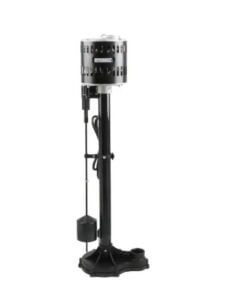
These are designed to be installed above the basement floor or crawlspace where they remain visible and out of the way. They usually have a middle outlet for draining, a float switch that will activate when the water level rises too high, and an automatic shut-off valve that helps prevent overflows.
Submersible Sump Pumps:
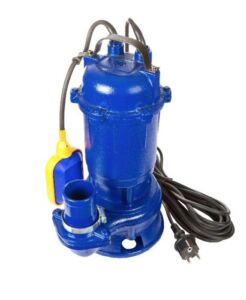
These sump pumps are designed to be placed inside a specially made basin, with the pump set up underneath the water line so it is fully submerged. The main advantage of these sump pumps is that they typically perform better than pedestal pumps because they can handle more water pressure due to their location in the basin.
Features and Benefits of Sump Pumps
- Ease of Installation: Sump pumps are relatively easy to install and require minimal maintenance over their lifetime.
- Cost-Effective: Sump pumps come at different prices, so you can choose one that fits your budget while still getting the protection you need for your home.
- Durability: Sump pumps are designed to last many years with proper care and maintenance.
- Peace of Mind: Installing a sump pump in your home gives you peace of mind knowing that your property is properly protected against flooding or water damage from heavy rains or plumbing issues.
Troubleshooting your Sump Pump:
If any of the signs mentioned above have been noticed, it may be time to troubleshoot your sump pump. Start by unplugging the unit and scrutinizing it for any rust or corrosion; if there are any signs of damage, contact a professional immediately. Next, ensure all components – including the float switch and outlet pipe – are working correctly and check for any blockages in the basin. It is essential to lubricate all moving parts with water-resistant grease to ensure optimal performance.
Regular maintenance will help prevent many issues from occurring in the first place, as checking all components and replacing worn parts when needed will ensure your sump pump continues to work as it should. This will keep your home safe from floods and help you save money in the long run by avoiding costly repairs or replacements.
Signs of Potential Failure in Sump Pumps:
Sump pumps that are not regularly maintained can suffer various problems over time. Rust or corrosion on the pump can indicate a problem, as these issues can weaken the materials and affect overall performance. Unusual noises from the pump may indicate an obstruction or lack of lubrication. Water present around the sump pump area is another sign that something is wrong since there should be no water outside the basin.
What is the life expectancy of a sump pump?

The life expectancy of a pump can vary depending on the type and brand, but generally speaking, a submersible pump has a longer lifespan than pedestal types. Submersible sump pumps may last up to 10 years with proper maintenance. Pedestal models typically have an estimated lifespan of 5-7 years.
By following these simple steps, you can ensure your sump pump continues working effectively and protecting your home from water damage. With the correct installation and maintenance, you can have peace of mind that your sump pump will be there when you need it most.
Maintaining your pump:
Check your sump pump every three months to make sure no rust or corrosion is present. If you notice any damage, it is best to call a plumber to service the pump instead of trying to repair it yourself.
The float switch is essential to your sump pump, which activates when the water level rises too high. Please ensure it works correctly by testing it regularly; if it does not move freely or activate when water levels rise, it should be replaced immediately for safety reasons.
Please make sure the basin is free from debris and sediment buildup. Silt and dirt can interfere with the float switch, causing the sump pump to malfunction or fail. You can use a Wet Vac or other device to clear out the basin for efficient operation if necessary.
Sump pumps have a filter system that should be inspected and maintained regularly to ensure optimal performance and efficiency levels. Replace filters every two years as part of the maintenance routine to avoid potential problems.
It’s essential to test your sump pump at least once a year by pouring water into the basin and ensuring it runs accordingly without any issues. Doing this will help you catch any possible signs of failure before they become significant problems requiring more costly repairs or replacements later on!
Backup Sump Pumps:

A backup pump can protect your home if your primary sump pump fails due to power outages or other technical issues. Backup systems are a vital part of any homeowner’s flood protection plan, and they come in two main varieties: battery-powered and water-powered.
A rechargeable battery powers battery-powered pumps, so they will function even during a power outage as long as the battery is charged. These pumps are usually easy to install and require minimal maintenance, though you must check the battery periodically and keep it charged. -powered pumps are the other option, and they run on pressurized water from a municipal source. These systems provide reliable protection in an emergency and require no maintenance; however, they can be complicated to install and may not be suitable for all homes.
No matter which type of sump pump you choose, taking the time to install and maintain it properly is essential to keeping your home safe from floods. Sump pump systems are a great way to protect your house against water damage, but they require regular maintenance and inspection to ensure they keep working optimally when needed. Schedule routine inspections on your sump pump system regularly and test it at least annually to ensure it’s running correctly and ready to help protect your home.
Tap Tech offers comprehensive sump pump solutions for residential and commercial properties. With our experienced technicians, we can help ensure your sump pump is installed the first time correctly with minimal maintenance needs. We also offer emergency repair services to ensure your home is always protected from flooding.

Water-powered sump pumps use pressure from the municipal water supply to activate them during flooding. The pressure is regulated with a control valve, allowing these pumps to work quietly and efficiently without needing an external energy source.
Water-powered sump pumps require professional installation and regular maintenance to remain operational when needed. Contact Tap Tech if you need help installing a Backup Sump Pump system!
We have discussed the different types of sump pumps available on the market, their features and benefits, the installation process, maintenance requirements, and how to identify possible signs of failure. Sump pumps are an invaluable tool for protecting your home from floods and providing peace of mind that no matter what happens, you’re always prepared.
With the right pump in place and regular maintenance checks, your home will remain safe from flooding damage, so you can relax knowing your family’s safety is taken care of. Sump pumps are an excellent investment that can save you money and hassle in the long run, so it’s worth taking the time to understand how they work and how best to look after them.
Understanding the different types, features, and benefits can help you choose the right pump. Additionally, regular maintenance checks will help catch potential issues before they become more significant problems and save you time and money in repairs or replacements. With these tips in mind, you can rest easy knowing that your family is protected against flood damage with a reliable system installed in your home.
Sump pumps are an invaluable tool for protecting your home from flooding and providing peace of mind that no matter what happens, you’re always prepared. With the right pump in place and regular maintenance checks, your home will remain safe and secure, so you can rest assured that you and your family are always taken care of.
Sump pumps are a significant investment, as they offer long-term protection against potential damage caused by floods without requiring too much effort or money spent on upkeep. So invest in a quality sump pump today and enjoy peace of mind knowing your home is safe from flooding!
For more information on Sump Pumps or help with Sump Pump installation, service, and replacements, don’t hesitate to contact Tap Tech today.


